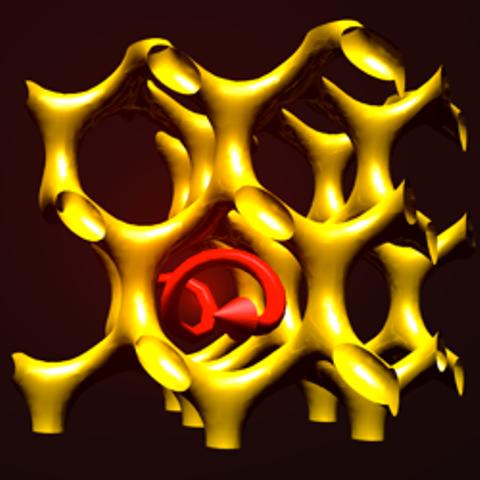Metamaterials h ave unusual optical properties arising from periodic nanostructures on a length scale much smaller than the wavelength of light. Such unexpected effects can be, for example, light focusing down to near atomic scales, or the cloaking of embedded objects toward invisibility. The required metal architectures with features on the order of 10 nm are extremely difficult to construct. Fabrication methods like focused ion beam lithography, direct laser writing, and atomic layer deposition provide design flexibility, but are limited with regard to accessible feature sizes as well as the scalability of samples.
ave unusual optical properties arising from periodic nanostructures on a length scale much smaller than the wavelength of light. Such unexpected effects can be, for example, light focusing down to near atomic scales, or the cloaking of embedded objects toward invisibility. The required metal architectures with features on the order of 10 nm are extremely difficult to construct. Fabrication methods like focused ion beam lithography, direct laser writing, and atomic layer deposition provide design flexibility, but are limited with regard to accessible feature sizes as well as the scalability of samples.
Ulrich Steiner and co-workers (University of Cambridge, UK) present for the first time the fabrication of a truly 3D metamaterial using polymers that assemble themselves into repeating structures of the required size and symmetry. This organic template is then replicated into a gold network. For this purpose, block copolymers are unique as they can form complex 3D architectures with features on the nanometer length scale and provide scalability of the samples. The resulting material shows a reduced plasmon frequency and exhibits an orientation-dependent color change under linearly polarized light, as well as optical chirality across the visible region. The presented approach will pave the way for potential mass production of large-scale 3D optical metamaterials. A video of some of the shapes created by the group has also been published – you can find it here.
The research is reported in the first issue of Advanced Optical Materials, the new section in Advanced Materials (2010 IF: 10.880) dedicated to exploring light-matter interactions. The paper, “A 3D Optical Metamaterial Made by Self-Assembly “, is available for free download from Advanced Optical Materials.

















